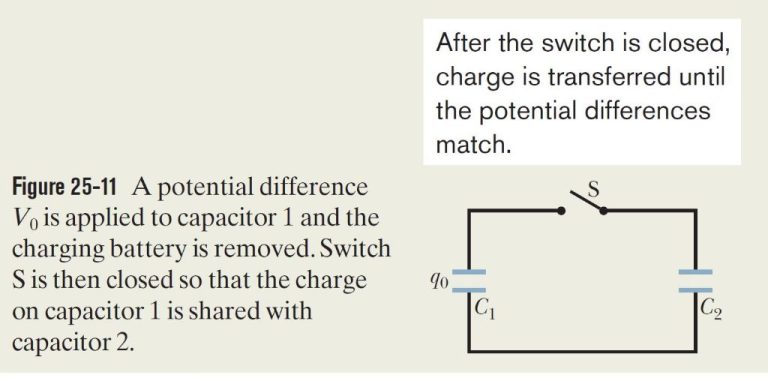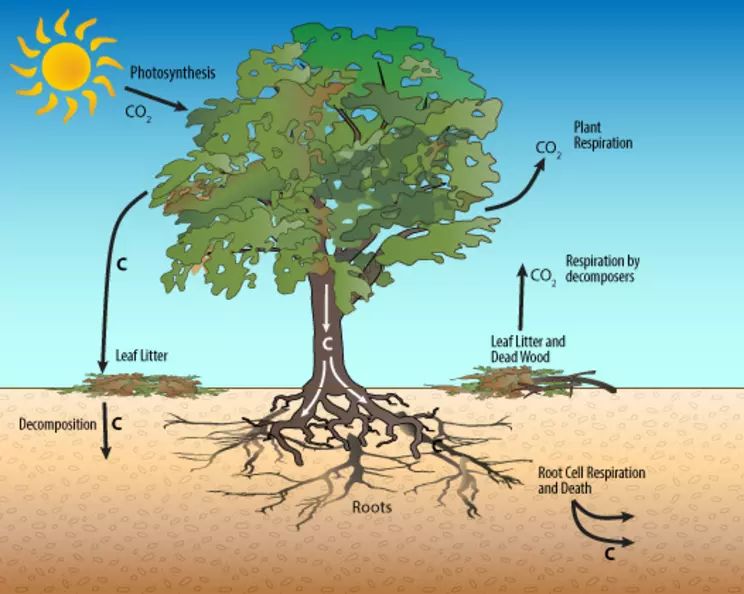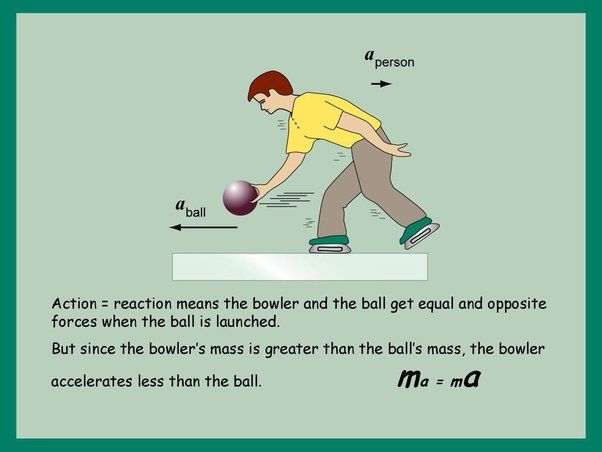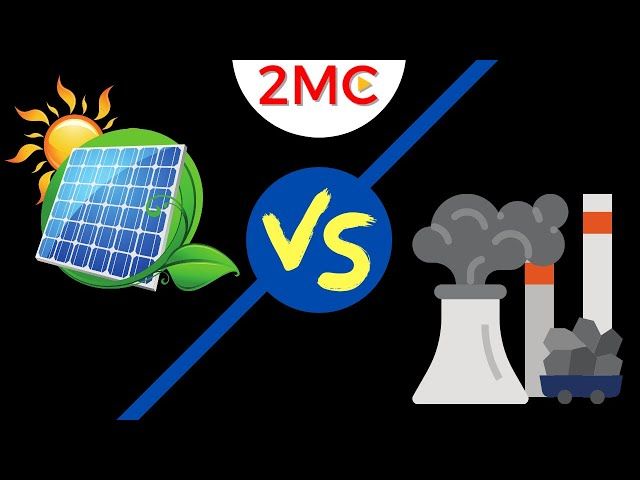What Human Activities Could Redistribute Carbon Loads In The Cycle So That Global Warming Might Slow Or Decrease?
Climate change poses one of the greatest threats to humanity, as rising levels of greenhouse gases like carbon dioxide trap heat in the atmosphere and cause global temperatures to rise significantly. The main human activity driving this rise in the past century has been the burning of fossil fuels like coal, oil, and natural gas, which releases vast amounts of carbon into the atmosphere that would otherwise remain locked underground.
Redistributing this carbon load is critical to slowing or even reversing global warming trends. The goal is to lower the overall amount of carbon emissions humans put into the atmosphere each year, while also increasing natural carbon sinks that can absorb and store carbon, like forests and soil. By changing energy sources, improving land use practices, and innovating new carbon capture technologies, humans may be able to redistribute carbon in a way that reduces the greenhouse effect and cools the planet back down over time.
Reducing Fossil Fuel Use
One of the most impactful ways to reduce carbon emissions is by transitioning away from fossil fuels like coal, oil and natural gas. Fossil fuels emit CO2 and other greenhouse gases when burned for energy. Shifting to renewable energy sources like solar, wind and hydropower can dramatically cut emissions.
Improving energy efficiency is another important strategy. Simple steps like weatherizing buildings, upgrading to LED lights and energy-efficient appliances can significantly reduce energy usage and emissions. Smart grid technologies and stricter efficiency standards for vehicles and equipment can also help optimize energy consumption.
Electrifying transportation through electric vehicles, trains, buses and other modes is essential. Internal combustion vehicles are a major source of emissions. Widespread adoption of EVs charged by clean electricity would displace gasoline and diesel-powered transport.
Phasing out fossil fuel power plants in favor of renewable energy, enhancing efficiency efforts across sectors, and transitioning to EVs and other clean transportation can make a major dent in emissions and help stabilize the climate.
Reforestation
Reforestation involves restoring forests that have been cut down or damaged. This can be done by planting new trees or allowing the forests to naturally regrow. Reforestation helps absorb carbon dioxide from the atmosphere through photosynthesis and store it as carbon in biomass and soils.
There are two main approaches to reforestation:
- Planting new forests in areas that were previously forested but cleared for other land use. This is known as afforestation.
- Restoring degraded forests that have been damaged by logging, fires, or other causes. This helps re-establish the natural forest ecosystem.
Reforestation projects can be implemented on both public and private lands. Governments can support reforestation by designating protected forest areas, providing incentives for landowners to maintain or expand forests, and funding tree planting initiatives. Nonprofit organizations also fund many reforestation projects worldwide.
The benefits of reforestation go beyond carbon sequestration. New forests support biodiversity by providing habitat for many species. They prevent soil erosion and desertification. Reforestation can also support local economies by creating forestry jobs and sustainable timber harvesting over the long-term.
Agricultural Practices
The agricultural sector contributes significantly to global greenhouse gas emissions through activities like deforestation, livestock production, soil degradation, and the use of synthetic fertilizers. Adopting more sustainable farming techniques can help capture carbon in the soil, reduce emissions, and promote ecological balance. Key strategies include:
Reducing Meat Consumption
Livestock like cattle produce high levels of methane through their digestive processes, while land clearing for pastures and animal feed crops is a major driver of deforestation. Reducing global meat consumption, especially beef and lamb, would significantly lower greenhouse gas outputs from the agricultural sector.
Regenerative Agriculture
Regenerative agriculture aims to improve soil health using techniques like no-till farming, cover cropping, crop rotations, and integrating livestock grazing. Healthier soils with high organic matter can sequester more carbon. Widespread adoption of regenerative agriculture principles would increase carbon capture on farmlands.
Low/No Till Farming
Tilling soil releases stored carbon into the air. Switching to low or no-till practices that minimize soil disturbance helps soils retain carbon. Farm equipment innovations and crop selection strategies can facilitate this transition.
Carbon Capture and Storage
Carbon capture and storage (CCS) is the process of capturing waste carbon dioxide from large point sources, like power plants or industrial facilities, transporting it to a storage site, and depositing it where it will not enter the atmosphere. CCS technology offers great potential for removing carbon from the air and storing it underground or in long-lived products.
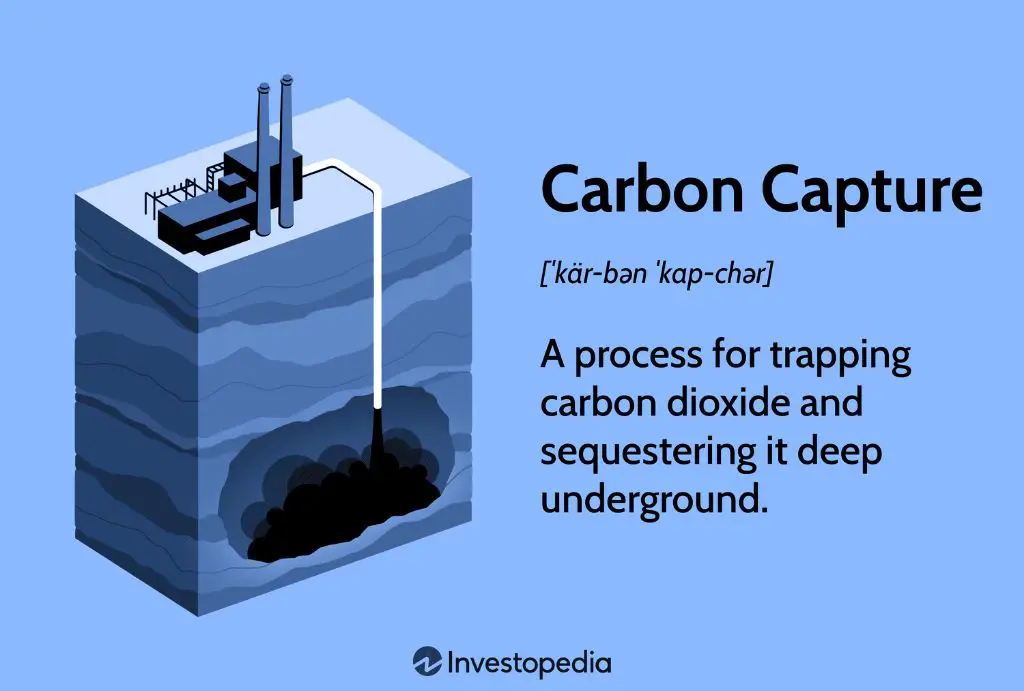
One type of CCS is direct air capture, which uses chemical reactions to capture CO2 directly from the air. The CO2 can then be sequestered by injecting it into deep geological formations. Direct air capture plants are currently operating commercially to provide CO2 for carbonated drinks or enhanced oil recovery, but the technology holds promise for large-scale carbon removal if costs can be reduced.
Another form of CCS is bioenergy with carbon capture and storage (BECCS), which involves growing biomass, using it for energy, capturing the CO2 emissions and sequestering the carbon. The CO2 absorbed as the plants grow offsets the emissions from BECCS energy. Combining bioenergy with CCS results in net negative emissions.
Natural forms of carbon capture include planting more trees on degraded land and adopting farming practices that increase carbon content in soil. Choosing cover crops, reducing tillage, and applying compost all help sequester carbon. Wetland restoration and coastal plantings like mangroves also directly remove carbon dioxide from the air and provide carbon storage.
Changing Dietary Habits
Changing our dietary habits can have a significant impact on reducing carbon emissions. Simple changes like reducing food waste and choosing low carbon foods can make a difference.
Reducing food waste is an easy yet impactful step. Roughly one third of all food produced globally ends up wasted. The production, processing, and transportation of this wasted food accounts for 8-10% of global greenhouse gas emissions. Minimizing food waste – for example through better meal planning, proper food storage, and repurposing leftovers – is a simple way for individuals to lower their carbon footprint.
Choosing low carbon foods is another impactful dietary change. Animal products like beef, lamb, and dairy often have very high carbon footprints due to the resources needed to raise livestock. Opting for plant-based sources of protein like beans, lentils, and nuts can drastically cut an individual’s food-related emissions. Additionally, eating locally sourced, seasonal produce reduces emissions from long distance transport.
With some planning and conscious choices, changing our dietary habits can make a real dent in global carbon emissions and is an accessible way for individuals to combat climate change through their everyday actions.
Improving Manufacturing Processes
The manufacturing sector is responsible for significant greenhouse gas emissions globally. Improving manufacturing processes can help reduce carbon emissions in two key ways:
- Increasing energy efficiency – Manufacturers can upgrade equipment, optimize processes, and implement sensors and automation to reduce energy usage. Simply using energy more efficiently lowers carbon emissions.
- Carbon capture – New technologies allow carbon dioxide emissions to be captured at the source before being released. The carbon can then be recycled or stored underground instead of entering the atmosphere. Installing carbon capture systems on manufacturing plants and factories can directly reduce carbon outputs.
Government incentives and stricter regulations may encourage manufacturers to adopt cleaner, greener processes. But there are also cost savings – more efficient operations require less energy input. As technology advances and carbon capture scales up, manufacturing could continue with lower climate impacts.
Transitioning to a Circular Economy
Transitioning from a linear to a circular economy can help reduce carbon emissions by keeping materials in use longer. The traditional linear economy model is based on a ‘take, make, dispose’ approach, where raw materials are extracted, products are manufactured, and then disposed of after use. This leads to large amounts of waste and emissions.
A circular economy aims to eliminate waste by reusing, repairing, refurbishing, and recycling existing materials and products. This reduces the need for resource extraction and processing of new materials, resulting in lower carbon emissions. There are several strategies that can facilitate a circular economy:
Reduce: Using less raw materials in product design and manufacturing reduces extraction and processing emissions. Products can be made more durable, standardized, and modular to prolong lifespan.
Reuse: Reusing products in their original form avoids emissions from reprocessing materials. Products can be designed for disassembly and reassembly to retain components longer.
Recycle: Recycling materials into new products avoids emissions from resource extraction and material processing. Improved collection systems and technology can increase recycling rates.
Product life extension: Repairing and maintaining products to extend their usable lifespan avoids emissions from manufacturing replacements. Providing spare parts, manuals, and repair services enables longer product use.
Transitioning to a circular economy requires changes across product design, manufacturing, distribution, consumption, collection, and recycling systems. Though challenging, these strategies can significantly reduce material throughput and associated carbon emissions.
Carbon Taxes and Pricing Emissions
Governments can institute carbon taxes and emissions trading systems to make carbon emissions more expensive. This provides an economic disincentive for activities that produce high levels of greenhouse gases. A carbon tax directly sets a price per ton on carbon dioxide emissions, forcing companies to factor environmental costs into business decisions. Emissions trading systems like cap-and-trade create a marketplace where pollution permits can be bought and sold under a declining emissions cap.
Carbon pricing makes fossil fuels less economically viable compared to renewable energy sources like solar and wind. It encourages organizations and individuals to seek low-carbon alternatives that are cheaper and cleaner. Consumers and businesses change behaviors when carbon-intensive products and services become more expensive due to taxes or permit fees. Carbon pricing leads to emissions reductions while giving companies flexibility to adopt the most cost-effective solutions.
The revenue generated from carbon taxes or permit auctions can be returned to citizens through rebates and dividends. This compensates them for increased costs while still maintaining the incentive to reduce emissions. Pricing carbon globally at $75-100 per ton by 2030 could decrease emissions up to 24% while avoiding 0.3-0.7°C of warming by 2100, according to estimates by the High Level Commission on Carbon Prices led by Joseph Stiglitz and Nicholas Stern.
Conclusion
There are several key takeaways for reducing carbon loads and slowing global warming. The most notable include:
- Reducing fossil fuel use by transitioning to renewable energy sources like wind, solar, and hydropower can significantly lower carbon emissions. Energy efficiency improvements in buildings, transportation, and industry can also help.
- Reforestation and afforestation efforts that plant trees and regrow forests help absorb CO2 from the atmosphere through photosynthesis.
- Sustainable agricultural practices like low/no till methods, cover cropping, and rotational grazing can improve soil health and its ability to store carbon.
- Direct air carbon capture technologies show promise for actively removing CO2, but require major development to scale up.
- Dietary shifts towards more plant-based foods and less meat/dairy reduce the large carbon footprint of animal agriculture.
The most high-impact solutions appear to be transitioning from fossil fuels to renewable energy and enhancing natural carbon sinks through reforestation and improved agricultural practices. With concerted global efforts across countries and industries, human activities can be redirected to redistribute carbon loads and achieve a cleaner, cooler planet.


